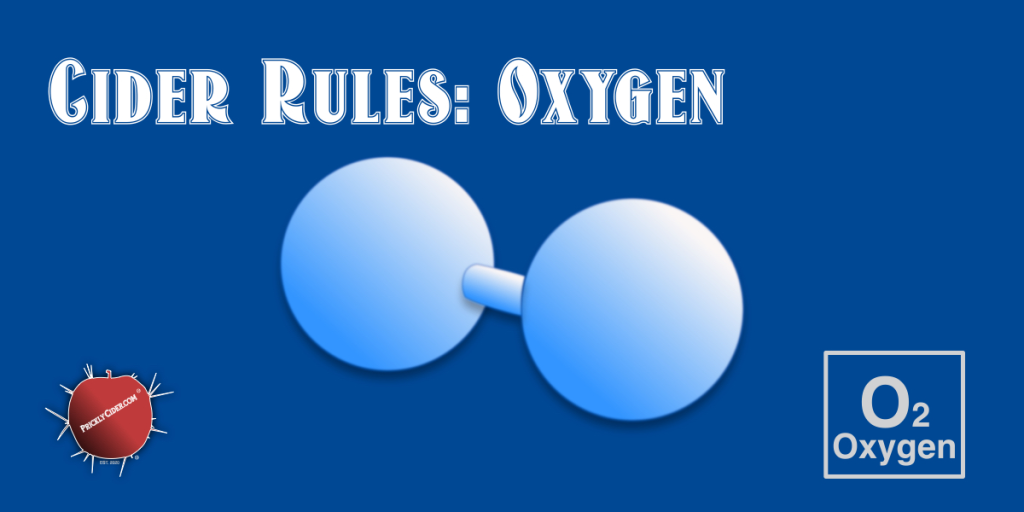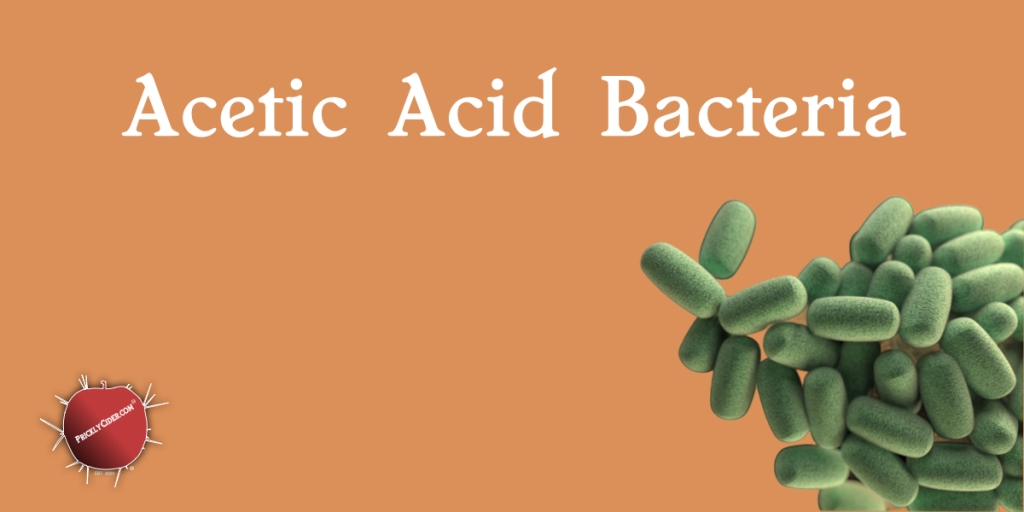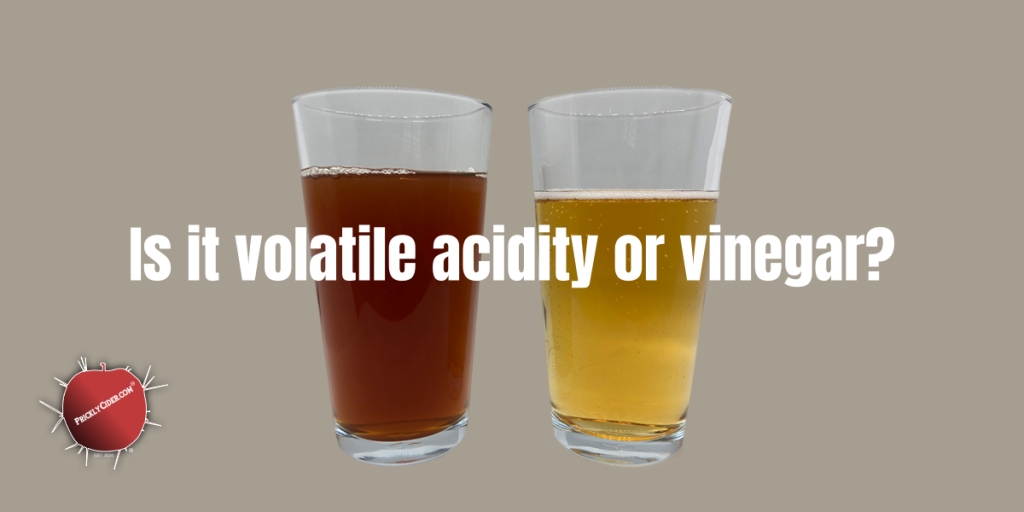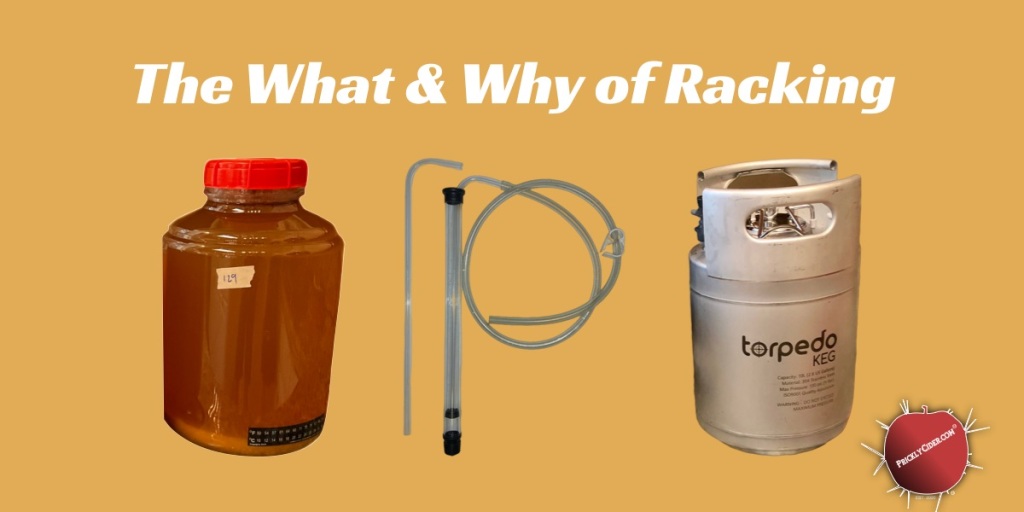Oxygen, it’s the dreaded enemy of hard cider makers around the world. Or, is it? I’ve written about how you should avoid oxygen in your cider making process. I am also prone to say that the answer to many cider related questions is simply: it depends. Ultimately, oxygen is no different. Oxygen exposure during your cider making process depends on when, how much, and your intent. The general rule is to oxygenate your juice but avoid oxygen once fermentation begins. This is a broad rule that is generally accurate and following it will generally improve your hard ciders as it supports the creation of positive aromas while reducing undesirable aromas. As I have noted in my post on the phases of fermentation, yeast have three main phases or stages that they experience while reproducing. I think it is helpful to explore the impact of oxygen relative to these three stages.

Nutrient Absorption (Respiration):
The first thing that happens when yeast find themselves in apple juice is they start assessing what compounds are available to them. Their goal is to reproduce and one of the most effective ways for them to create and store the energy and nutrients needed is through respiration. The definition of respiration is that the yeast cell is processing oxygen as well as other compounds to create ATP, the energy source for cellular function. Respiration is one of the most efficient process available to yeast cells and it is their preferred method to create ATP unless other factors prevent it. Having oxygen in your juice and preferably, a lot, is very helpful to ensuring your have healthy yeast cells that can begin reproducing. This is all part of the first stage where yeast absorb all the nutrients they need. Processing apples into juice will naturally add oxygen. Pouring juice from one container to another will add oxygen. You can add even more by pumping oxygen into it through a diffusing stone or by agitation such as shaking a carboy of juice with headspace.
However, as I noted above, that doesn’t mean that adding all this oxygen wouldn’t have any negative impacts. Everything always has some type of impact. As with any stage in the cider making process, the addition of oxygen will most likely result in oxidative activity. Remember how some apples turn brown after you cut or bite into them? That is oxidative browning, which is usually caused by phenolic compounds being exposed to oxygen. This can impact color, the browning or amber you see, as well as reduce the total phenolic compounds in your juice or cider. This can reduce the astringency and bitterness as tannins combine with the oxygen. This isn’t a big concern for the yeast except that it might create different compounds they can utilize. But, for the cider maker, this can impact the final color of your cider as well as the level of astringency and bitterness you have. My article on silver cider is an example of how oxygen can influence color. Sulfite, free SO2, in your juice or cider can help prevent this oxidative reaction and is one reason why it is commonly added to wine and some ciders. Overall, I tend to think a good amount of oxygen dissolved in your juice pre-fermentation is a positive thing but I don’t personally try to increase it by using diffusing stones or lots of agitation.
Reproduction (Fermentation):
Because there are rarely absolutes, especially in cider making, you can still have oxygen dissolved in your juice while yeast begin to reproduce using an anaerobic pathway. As hard cider makers, this is the process we call fermentation where yeast anaerobically convert sugar to ethanol, CO2, and ATP. While oxygen may be present, it’s generally easier to think of this phase as being devoid of oxygen. Adding oxygen to the process by fermenting with an open fermenter because your bucket lid leaks, your airlock is dry, or you are taking a page from open vat brewing, will further mix the respiration and other aerobic pathways with anaerobic pathways, like fermentation. Some yeasts might be in one state while others another. There are two other considerations. The first is that there are other organism in your juice and cider and many of these like oxygen. Acetic acid bacteria is one such group of organisms. Acetic acid bacteria take the ethanol and use it to create acetic acid or vinegar. Most people don’t want vinegary hard cider. Limiting the oxygen, limits the ability of acetic acid bacteria from doing what they want to do, which results in acetic acid creation. The second consideration is oxidation again. Anytime you introduce oxygen, you risk oxidizing compounds, which simply means compounds exchange electrons. One compound loses electrons, oxidizes, while another gains electrons, reduction. As a reference, rust on metal is a form of oxidation just like the browning of an apple. Basically, oxygen can impact flavor and mouthfeel by creating more acetic acid, reducing ethanol creation, precipitating out phenolic compounds, and combining with other compounds.
Open vat beer brewing method is still done today so who am I to say it won’t make a great cider. More likely, your airlock will go dry or your lid will leak exposing your cider to oxygen. This probably won’t allow excessive amounts of oxygen to reach your cider but, maybe enough to impact flavor, color, and mouthfeel. A lot of oxygen is needed to convert cider to vinegar. If you add or allow oxygen in this phase, you are more likely to create some acetic acid and increase the oxidation of various compounds. You risk creating negative flavor characteristics in your cider versus positive contributions. My recommendation is to avoid oxygen exposure of your cider once your fermentation starts.
Dormancy (Clean Up):
The last stage is where the yeast finish processing the available sugar and begin to settle out. We can extend this into maturation or the aging of your cider because the yeast and other solids can take time to settle out. The sugar that the yeast used to create energy and turn your juice into hard cider is gone. As yeast recognize this situation, they begin absorbing nutrients and compounds that can be used to survive while waiting for another chance to reproduce. As part of that process, yeast will often absorb various compounds but, oxygen isn’t one of them so adding oxygen will generally not be helpful. Instead, adding oxygen in this phase is more likely to help other yeasts and bacteria like some strains of Brettanomyces and acetic acid bacteria. The lactic acid bacteria (LAB) reproductive cycle is anaerobic so oxygen wouldn’t help facilitate malolactic acid fermentation.
There are fermented beverages that do utilize oxygen in the phase as they are matured under film yeasts. Sherry wines are an example. Even regular red wines experience micro-oxygenation through the absorption of oxygen through corks and barrel wood. To say you should never exposure cider to oxygen during this phase would be to ignore some of these interesting styles and methods. However, this is also very purposeful and planned. Aging your hard cider in a bucket with vast amounts of headspace and finding a layer of film yeast would count towards the reasons why you avoid oxygen. Just like there are various fermenting yeasts, there are also various film yeasts. If you understand the film yeasts present and you are working to enable them, oxygen exposure will be a deliberate part of your process. Otherwise, you should again avoid oxygen as much as possible in this stage since it will generally not benefit your cider.
Hopefully, you have a better understanding how oxygen can impact your hard cider at different stages. If you enjoyed this tip and want to continue receiving similar articles, follow me.
Here are some similar posts you might find interesting.
Did you enjoy these tips on making hard cider? Check out my book to learn more ideas and information on making and enjoying hard cider. It will help you develop a process that matches your desire and equipment. It will also show you how to pair cider with food to maximize your experience. You can find it as an eBook and a 7×10 paperback on Amazon or a 7×10 paperback on Barnes & Noble. Click on these Links to check them out.





